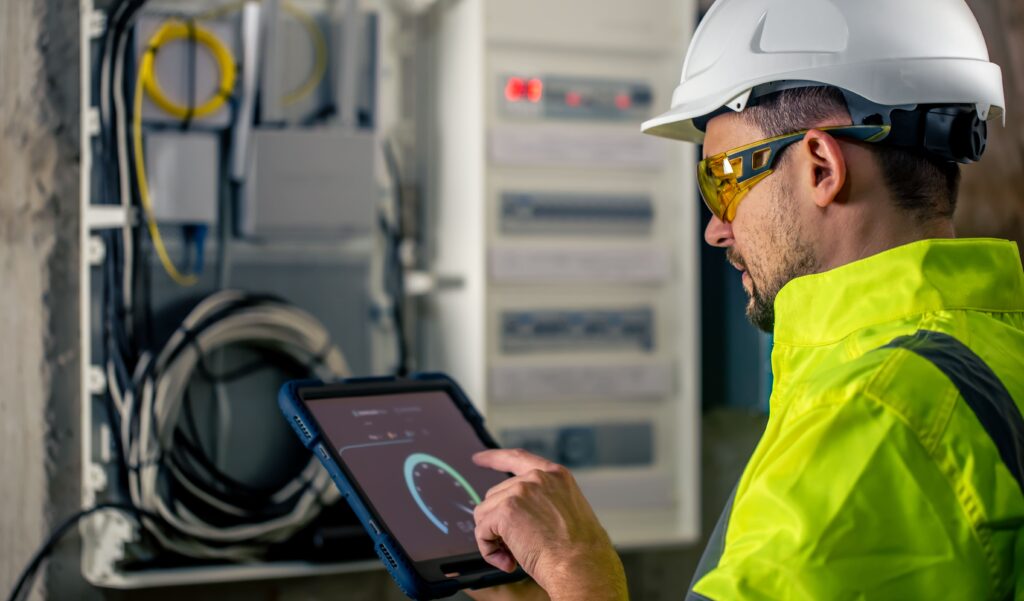Charge controller enclosure design and manufacturing
Charge controllers are an essential component of any renewable energy system. solar panel array, wind turbine, or microhydro system. The charge controller’s main function is to regulate the flow of electricity from the source to the battery bank, ensuring that the batteries are charged properly and not overcharged or damaged. Charge controller enclosures are designed […]

Charge controllers are an essential component of any renewable energy system.
solar panel array, wind turbine, or microhydro system.
The charge controller’s main function is to regulate the flow of electricity from the source to the battery bank, ensuring that the batteries are charged properly and not overcharged or damaged.
Charge controller enclosures are designed to protect the charge controller and its associated electrical components from environmental factors such as rain, snow, and extreme temperatures.
Designing and manufacturing charge controller enclosures requires a thorough understanding of the charge controller’s requirements, as well as the environmental conditions in which the enclosure will be used.
The enclosure must be able to withstand the elements and provide sufficient ventilation to keep the charge controller cool. The enclosure should also be easy to install and maintain, with easy access to all of the components for troubleshooting and maintenance.
One of the most important considerations when designing a charge controller enclosure is the material that will be used. The enclosure should be made of a durable and corrosion-resistant material that can withstand the elements.
Aluminum and stainless steel are two popular choices for charge controller enclosures, as they are both strong and durable. However, other materials such as polycarbonate and ABS plastic can also be used, as long as they are UV-stabilized and able to withstand high temperatures.
Another important consideration is the size of the enclosure. The enclosure should be large enough to accommodate the charge controller and any additional components, such as fuses, breakers, and monitoring equipment. The enclosure should also have enough space to allow for easy installation and maintenance.
The enclosure should also be designed with a ventilation system to keep the charge controller cool. This can be achieved through the use of vents, fans, or heat sinks. The ventilation system should be designed to keep the charge controller within its operating temperature range, even in extreme temperatures.
The enclosure should also be designed to be weatherproof, to protect the charge controller and its components from rain, snow, and other environmental factors. This can be achieved through the use of gaskets, seals, and weatherproofing materials.
The enclosure should also be designed with easy access to all of the components for troubleshooting and maintenance. This can be achieved through the use of removable panels, doors, or access hatches. The enclosure should also be designed with a locking mechanism to prevent unauthorized access.

Once the design of the charge controller enclosure is complete, it is time to move on to the manufacturing process.
The first step is to create a prototype of the enclosure, which can be used to test the design and make any necessary changes.
Once the prototype has been finalized, the enclosure can be mass-produced using a variety of manufacturing techniques such as injection molding, stamping, or fabrication.
In the manufacturing process, the enclosure should be thoroughly tested to ensure that it meets all of the design specifications.
This includes testing for weatherproofing, ventilation, and cooling, as well as testing the enclosure’s ability to withstand extreme temperatures and environmental conditions.
The charge controller enclosures are an essential component of any renewable energy system. They are designed to protect the charge controller and its associated electrical components from environmental factors such as rain, snow, and extreme temperatures.
The design and manufacturing process of charge controller enclosures requires a thorough understanding of the charge controller’s requirements, as well as the environmental conditions in which the enclosure will be used. Guidelines, you can be sure that your charge controller enclosure will be durable, weatherproof, and easy to install and maintain.


